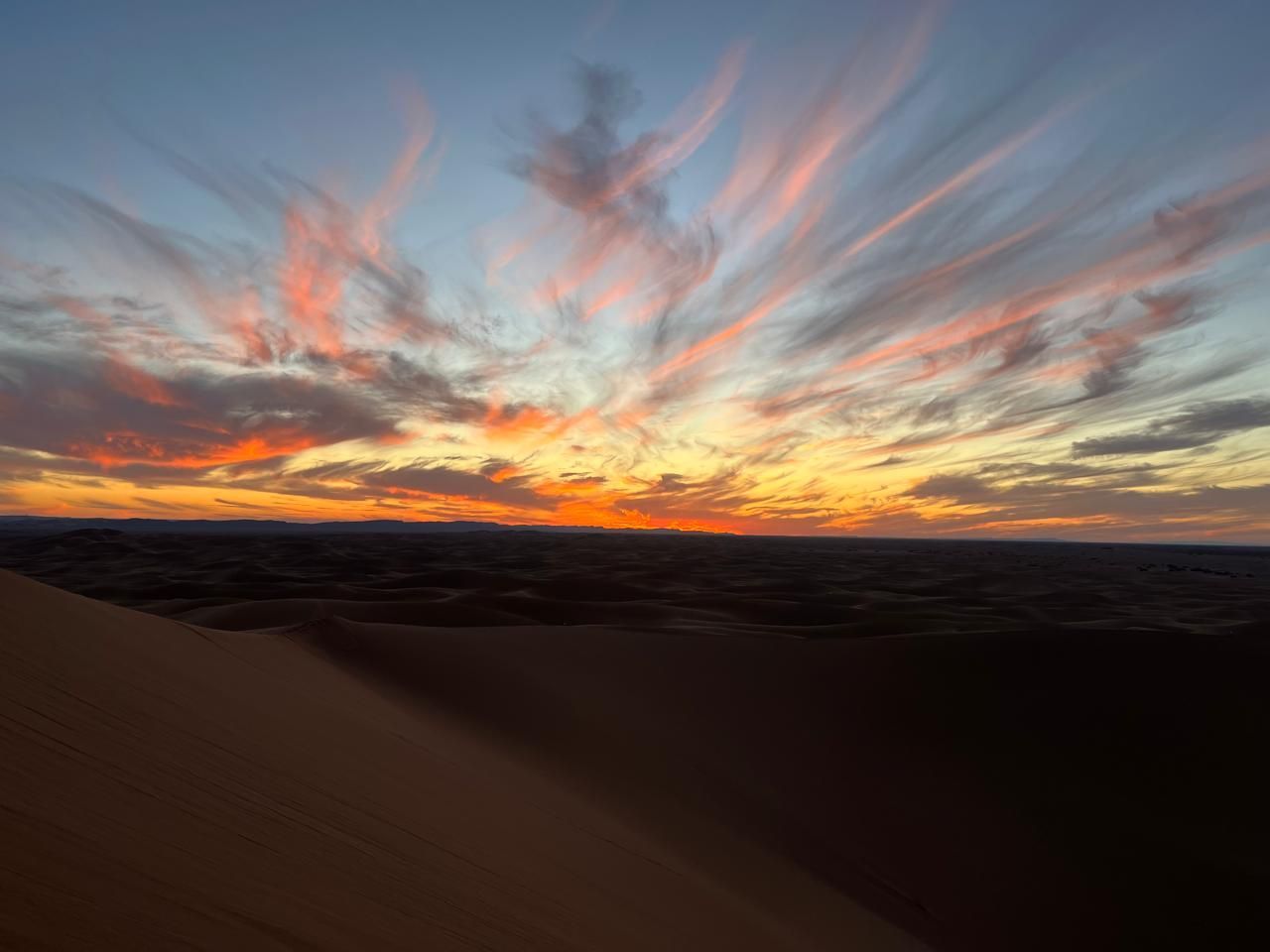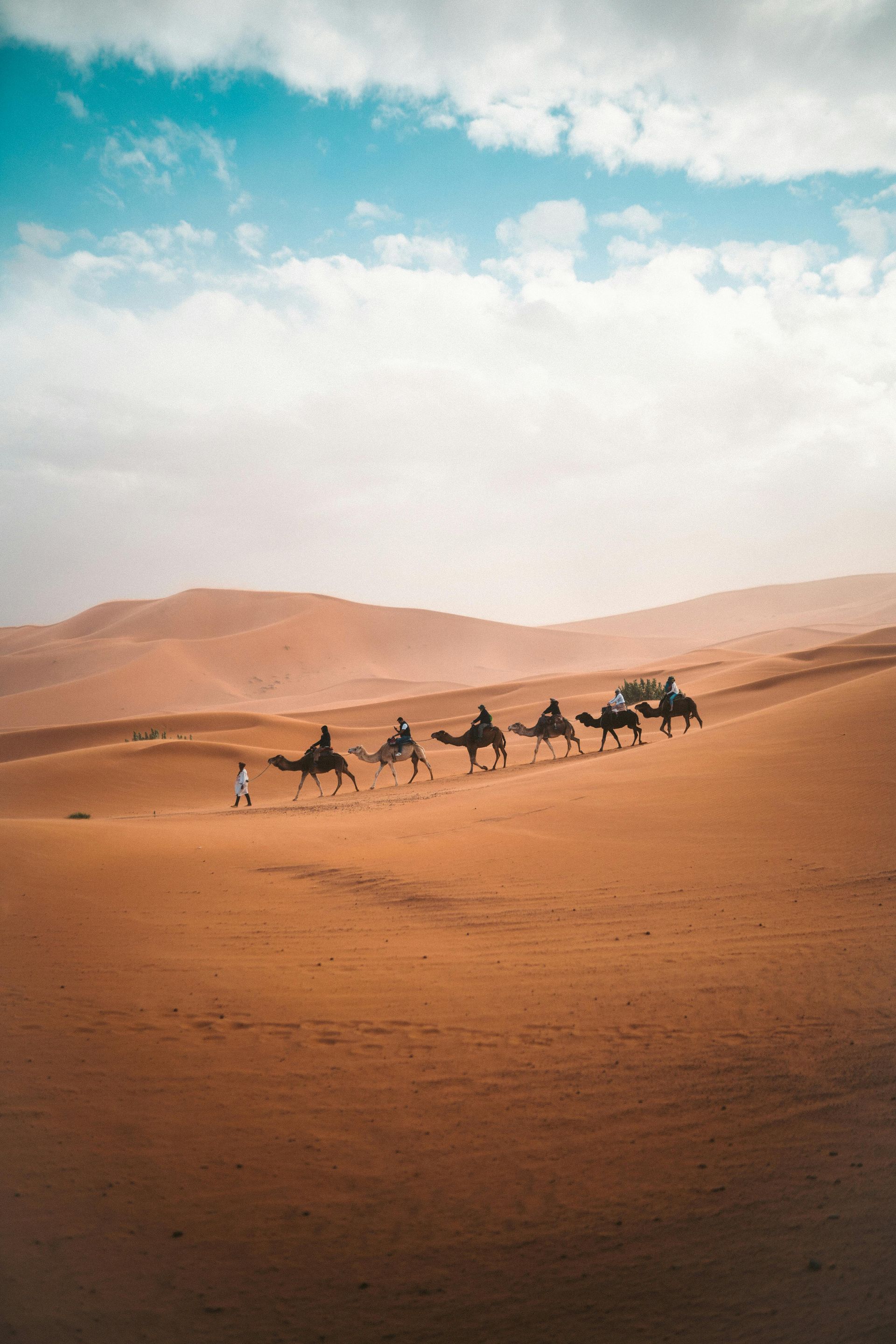Finding yourself in the desert
Embracing the Essence of Morocco: A transformative Jouney through the sahara desert

For many, travel serves as an escape from the routines and monotony of everyday life—a temporary reprieve, where the backdrop may change but the script remains unchanged. Yet, there exists another dimension of travel, one that transcends the superficiality of pastel walls and luxury resorts—a dimension that penetrates deep into the soul and reshapes one’s very essence. This realm of travel is what I discovered during my numerous journeys to Morocco. To say that my experiences in this vibrant land have been life-altering would be an understatement; they have been truly transformational.
Morocco is not just a place on the map; it is an intricate tapestry of culture woven into the very fabric of the universe. It exudes an intoxicating metaphysical energy that can awaken even the most dormant spirit. When I first set foot in this mesmerizing land, I was plucked from my familiar world, casting aside the comforting cocoon I had long wrapped myself in. In its place, I found an exhilarating complexity—a culture that was, at once, foreign yet beckoning, stark yet magnificent. It was as if I had unlocked a hidden chamber of my existence, one that roused my long-forgotten curiosity for life, rekindled my creative spirit, and ignited a desire for deep, genuine intimacy with myself.
In my regular life, surrounded by an abundance of conveniences and opportunities, I often succumbed to the all-too-familiar grip of discontent. I took to complaining over trivial inconveniences—the traffic, long lines, wait times for appointments and the fleeting stock of my favorite product. I found myself entrapped in a cycle of dissatisfaction, perpetually yearning for a “better” tomorrow. However, my time in Morocco—especially in the stark beauty of the Sahara Desert— has altered my perspective of this my life. I began to see the world through a lens of gratitude, realizing the countless privileges bestowed upon me merely by the happenstance of my birth, as well as the sacrifices made by those who paved the way for me.
The Sahara, with its vast golden dunes glistening under the sun, is more than just a county or a travel destination; it is a profound teacher. During my heartfelt interactions with those who call this harsh but beautiful landscape home, I learned the true meaning of living in the moment. Here, life is stripped back to its essentials, where each present moment is cherished and savored. My friends in the desert do have desires and ambitions, but they also possess an innate understanding of life’s preciousness. Their joy is palpable, a spontaneous eruption of being rather than a goal to be chased—a state of existence that is effortless in its purity.
Throughout the varied landscapes of human experience, it becomes evident that we are unified by our shared humanity. Regardless of our backgrounds—rich or poor, male or female—universal sentiments such as anger, regret, shame, and fear linger within us all. What matters is not the presence of these emotions, but our responses to them. The desert, with its vast expanse and silent whispers, guided me on a path of self-discovery and healing. In the embrace of its stillness, I learned to navigate the turbulent seas of my own emotional landscape, and for that, I will be eternally grateful.
In the haze of life’s complexities, I now strive to practice “authenticity over attachment.” I’ve come to realize that while I may not possess control over the outcomes of my experiences, I do have control over my own self. The desert and its people provide an unwavering reminder of this essential truth: that existence unfolds in the present moment. The golden sands of the Sahara stand as both refuge and guide, teaching me to relinquish the burdens of anticipation and anxiety.
Traveling through Morocco has been a mirror reflecting the essence of my being—showing me my strengths and vulnerabilities alike. Each visit has contributed to my growing confidence, an unending journey toward self-acceptance. Yet the greatest lesson imparted was one of surrender: when I find myself entangled in the web of worry or fear about the future, I vividly transport myself back to that magical expanse of the Sahara. There—beneath the cascading rays of a setting sun—I allow my swirling thoughts to surface, honoring them in all their complexity. Rather than resisting these emotions, I embrace and acknowledge them amidst the silence and stillness. And as the desert wind sweeps across the dunes, I release my burdens, letting them scatter into the expansive sands of time.
Morocco has gifted me a transformational experience that echoes far beyond its shimmering deserts or bustling souks. It has awakened a sense of wonder, an appreciation for the present, and a compassionate understanding of our shared humanity. To all those seeking not just a destination, but a genuine transformation—come, immerse yourself in the spirit of Morocco. Explore the vast expanse of the Sahara Desert and allow it to carve a new path within you, one that leads to an enriched life and an unyielding love for oneself. The desert awaits, with its golden sands, profound wisdom, and a promise of an unforgettable journey.
Surrender
In the vast embrace of the desert,
where silence stretches like the horizon,
I find a subtle hymn,
a whisper against the noise
clattering in my mind.
The stillness wraps around me,
a soft cloak of tranquility,
muffling the echoes of yesterday—
the ghosts of zeal and regret,
the restless stirrings of doubt.
Here, the dunes rise and fall
like the gentle breaths of nature,
inviting me to release,
to unburden the weight of my thoughts,
to let the parched air carry away
the sands of shame,
the fleeting flecks of worry,
the grief that haunts my heart.
Time becomes an illusion,
each grain shifting,
each moment fleeting,
and I learn to surrender
to the grace of the present,
to let go of what has been,
to welcome what is yet to come.
Across the undulating landscape,
I walk,
my fears scattering with the gusts,
lightened like fine dust,
as I cross over the horizon,
accepting the mystery that lies beyond the next rise.
I offer my burdens to the desert,
and in return, it gives nothing
but the simplicity of being,
the clarity of existence—
a pulse of peace felt deep within,
everything that was lost
finding its solace in the stillness.
In this space, I cultivate surrender,
knowing that in the quiet,
in the swirling sands,
I am invited to unfold,
to embrace the limitless,
to be present beneath the vast,
unforgiving sky.
Michelle Ritter

All Rights Reserved | Michelle In Morocco | Privacy | Disclaimer | Terms
